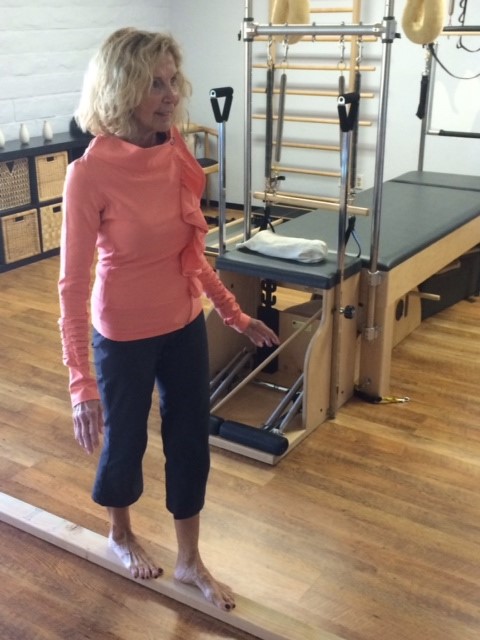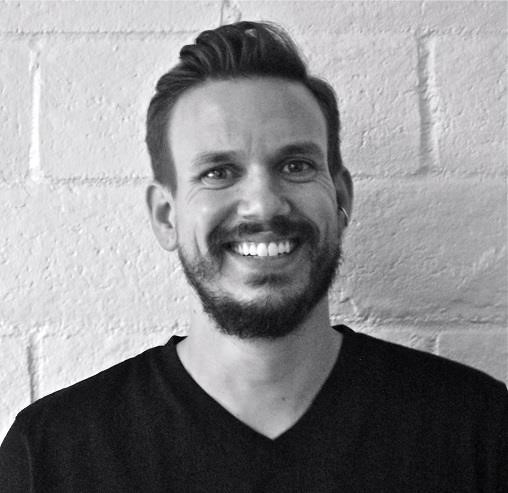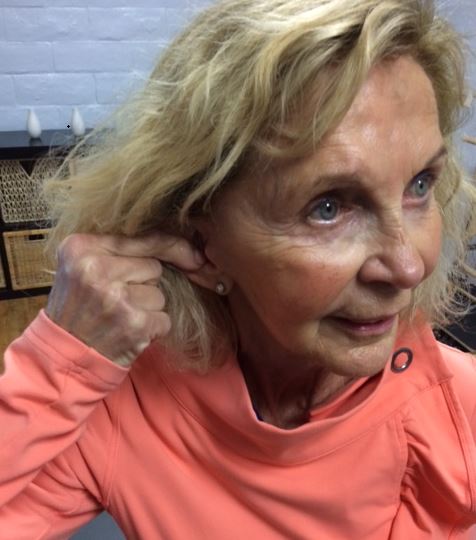I was a Myofascial Release Therapist long before I ever taught my first Teaser. A few years ago I was working with a client who came to me with balance issues due to traumatic brain injury. In John F. Barnes’ approach to Myofascial Release there’s a technique we use for the eusthacian tube that involves a gentle, almost indistinguishable tug laterally and posteriorly, of the ear concha (the deepest hollow/dish of the outer ear). There’s also a compression technique in which we manipulate the outer opening of the ear canal with our pinky finger (and sometimes tragus – the prominence in front of the outer ear opening) to illicit fascial change. Both of those releases are miracles for balance issues. I wondered specifically what I could be doing exercise wise with this client. As often happens necessity created an opportunity to explore and grow, and I quickly began to familiarize myself with the basics of the Vestibular System. Years later I had the privilege of assisting Elizabeth Larkam for a day as she taught a short workshop and worked privately with several of my clients. Most every client, myself included, received some specific vestibular training that day and the results were noticeable. So I dove deeper, and the more I understood this sensory system the better my clients reported their payoff.
We could spend semesters discussing the ins and outs, but the Vestibular System generally is the body’s lead sensory system governing movement, sense of balance, and spatial orientation. The anatomy consists, again generally, of two semicircular canals that indicate rotational movements, and a saccule and utricle that detect gravity in vertical orientation and acceleration in linear movement. Basically, and simplified, the Vestibular System is our inner ear working as a gyroscope that allows us to perceive orientation in space. The Vestibular System then intricately communicates with the muscles and nerves of our eyes, and the proprioceptive sense organs of our joints and skin to help create clear vision and control posture in an effort to keep us upright. Portions of the brain receive these messages, organize them, and then decide if the messages are cohesive and stimulate according movement behavior. If the messages are askew, as in the common beach phenomenon of your eyes seeing ebbing ocean waves, your body feeling the waves rushing away from you, but your Vestibular System staying consistent – the brain is confused and may produce inaccurate motor responses (as when you feel poor balance standing in the tide).
Now maybe you’re that rare instructor that has no clients with balance issues. So who cares about this stuff, right? Well, our Vestibular System is directly tied to our core and back muscles, as these are the first muscle systems to move our heads. Do you have clients with poor muscle tone (especially asymmetrically) / motion sickness / dislike of heights and swings / a poor sense of direction / and an inability to mentally rotate objects in space? Vestibular Dysfunction … check / check / check. At its most urgent Vesitbular Dysfunction can cause vertigo, tinnitus or ringing in the ear, and a whole lot of other ailments. Hopefully you and your client are prudent enough to know when to refer out for medical assistance. However there’s a lot that mindful exercise can help.
The more I learn about the body and movement, the more impressed I am with good ol’ Joe Pilates. An organized and accurate sense of feel in our joints is critical to our sense of balance, and systemically a healthy Vestibular System. Notably the workings of our ankle and neck joints. Our ankle joints cue us into our relationship with ground force – are we on a solid, slippery, giving, or stable surface? Our neck joints are important for our ability to organize our head in gravity – can we see where we’re going, what we’re chasing, and what’s chasing us? Too few other movement models give focus to ankle and neck health. Joe’s system and apparatuses not only give us the opportunity to challenge our joint health, but to do so in numerous relationships to gravity – standing / lying down / sitting / side-lying / upside down / and even sliding. By challenging our proprioception and joints we intrigue the Vestibular System. Just by doing “Pilates” we’re ahead of the game.
 This is where the tides turn, and you’re either on my boat or jumping off fast. A healthy Vestibular System craves spinning, swinging, bouncing, and linear acceleration. We can certainly stretch the truth and say Pilates is packed FULL of said actions, but neither you nor I could make a substantial enough list to prove the point. So here it is – it’s okay to add accessory movement to your sessions. It really is. You don’t even have to call it Pilates. Maybe you say, “This is where we’re going to play now.” Because when you break it down that’s what spinning, swinging, bouncing, and linear acceleration (okay – let’s give that some context: leaning forward, back, to the side, moving in a direction) is; it’s just play. That’s why active play is so important for kids. It’s not just about fun or even muscle building. The action of physical play stimulates our nervous system, creates new connections in our brain, and ultimately makes us smarter pliable thriving mammals at whatever age. We’ve been so busy talking about how long hours sitting in chairs staring at computers has rotated our pelvises and atrophied this or that muscle, that we’ve neglected what it’s doing to our Vestibular System and brain. Certainly a system that begins to develop 21 days after conception, and is fully developed 3 to 4 months before birth deserves more consideration than yeah I’m probably challenging that in my sessions.
This is where the tides turn, and you’re either on my boat or jumping off fast. A healthy Vestibular System craves spinning, swinging, bouncing, and linear acceleration. We can certainly stretch the truth and say Pilates is packed FULL of said actions, but neither you nor I could make a substantial enough list to prove the point. So here it is – it’s okay to add accessory movement to your sessions. It really is. You don’t even have to call it Pilates. Maybe you say, “This is where we’re going to play now.” Because when you break it down that’s what spinning, swinging, bouncing, and linear acceleration (okay – let’s give that some context: leaning forward, back, to the side, moving in a direction) is; it’s just play. That’s why active play is so important for kids. It’s not just about fun or even muscle building. The action of physical play stimulates our nervous system, creates new connections in our brain, and ultimately makes us smarter pliable thriving mammals at whatever age. We’ve been so busy talking about how long hours sitting in chairs staring at computers has rotated our pelvises and atrophied this or that muscle, that we’ve neglected what it’s doing to our Vestibular System and brain. Certainly a system that begins to develop 21 days after conception, and is fully developed 3 to 4 months before birth deserves more consideration than yeah I’m probably challenging that in my sessions.
 So here’s some play for you. It’ll be the cheapest piece of new equipment you’ve ever purchased. Get yourself a 2×4 board, sand it down, and walk the plank. It can be that simple, or you can turn up the volume and add in a head twist (or even better what about a head twist but keep the eyes focused forward), possibly some lungeing … what about walking backwards or sideways? Let’s go back to those fascial release techniques I mentioned. If you / your client has a hard time organizing a plank walk because you’re consistently tipping laterally and losing your balance to one side or the other then it’s likely an otolith (saccule or utricle) issue … so experiment with subtly closing the ear canal with the tragus by coaxing it over the canal opening with your pinky. Do you find yourself spiraling out of postural balance … probably a semicircular canal problem. Try the very gentle release (almost more of an intention to pull rather than an actual tug) of the ear conch. It’s been my experience that if you are tipping to the right then it’s an ipsilateral otolith issue, so compress the right ear. However the spiraling tends to come from the contralateral side, so tug on the opposite concha from the side you tend to spiral toward. However, case studies ain’t my thing … so experiment. The Rocking Reformer, CoreAlign, rebounders, rotator discs, balance boards are all valuable options in vestibular training. If adhering to a classical set of Pilates is your priority, then know that you’re doing a GOOD job with the Vestibular System. However, if you’re okay with coloring outside the lines a bit then there are endless options for a vestibular movement playground experience. Just have fun!
So here’s some play for you. It’ll be the cheapest piece of new equipment you’ve ever purchased. Get yourself a 2×4 board, sand it down, and walk the plank. It can be that simple, or you can turn up the volume and add in a head twist (or even better what about a head twist but keep the eyes focused forward), possibly some lungeing … what about walking backwards or sideways? Let’s go back to those fascial release techniques I mentioned. If you / your client has a hard time organizing a plank walk because you’re consistently tipping laterally and losing your balance to one side or the other then it’s likely an otolith (saccule or utricle) issue … so experiment with subtly closing the ear canal with the tragus by coaxing it over the canal opening with your pinky. Do you find yourself spiraling out of postural balance … probably a semicircular canal problem. Try the very gentle release (almost more of an intention to pull rather than an actual tug) of the ear conch. It’s been my experience that if you are tipping to the right then it’s an ipsilateral otolith issue, so compress the right ear. However the spiraling tends to come from the contralateral side, so tug on the opposite concha from the side you tend to spiral toward. However, case studies ain’t my thing … so experiment. The Rocking Reformer, CoreAlign, rebounders, rotator discs, balance boards are all valuable options in vestibular training. If adhering to a classical set of Pilates is your priority, then know that you’re doing a GOOD job with the Vestibular System. However, if you’re okay with coloring outside the lines a bit then there are endless options for a vestibular movement playground experience. Just have fun!
 James Crader is a Movement Practitioner specializing in Pilates and John F. Barnes Myofascial Release Therapy, a CoreAlign Faculty Member, and owner of Evolved Body in Sacramento, CA. His work with athletes was recently featured in Mark Pedri’s Pilates documentary A Movement of Movement. Originally trained through Balanced Body, James has since gone on to study with numerous instructors both Contemporary and Classical including a mentorship program with Pilates Elder, Lolita San Miguel. James feels privileged to have been asked to teach workshops nationally, and internationally in Joseph Pilates hometown of Monchengladbach. His passion is to assist people in exploring how their bodies can move and feel better, from a re-conditioning environment to athletic performance training. Catch his website here.
James Crader is a Movement Practitioner specializing in Pilates and John F. Barnes Myofascial Release Therapy, a CoreAlign Faculty Member, and owner of Evolved Body in Sacramento, CA. His work with athletes was recently featured in Mark Pedri’s Pilates documentary A Movement of Movement. Originally trained through Balanced Body, James has since gone on to study with numerous instructors both Contemporary and Classical including a mentorship program with Pilates Elder, Lolita San Miguel. James feels privileged to have been asked to teach workshops nationally, and internationally in Joseph Pilates hometown of Monchengladbach. His passion is to assist people in exploring how their bodies can move and feel better, from a re-conditioning environment to athletic performance training. Catch his website here.


